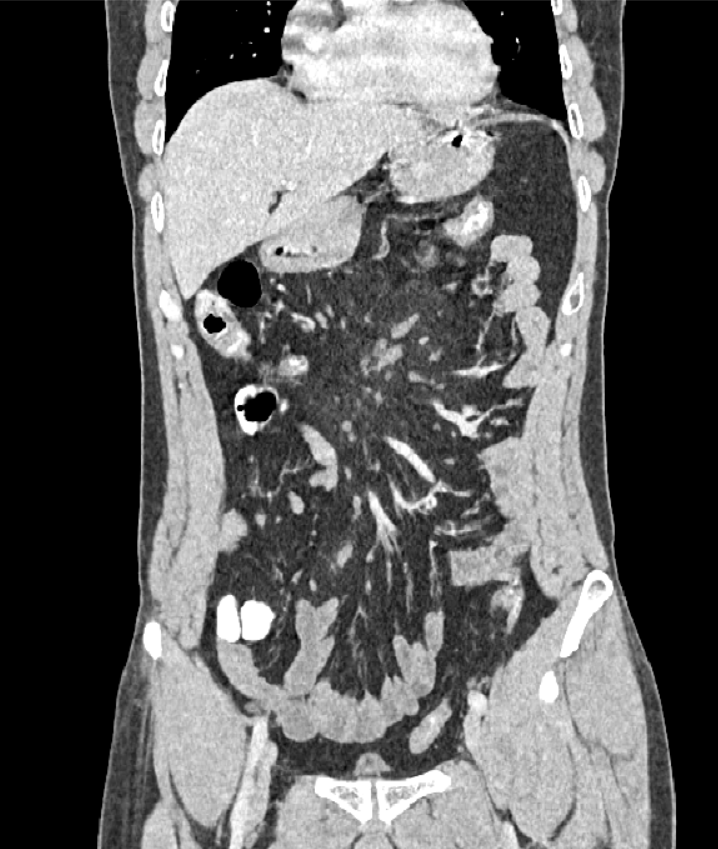Post-contrast CT [axial and coronal cuts]:
- A rather well defined large mesenteric mass-like lesion [red arrows] eliciting misty fat attenuation was noted. It is seen displacing the surrounding bowel loops but not displacing the surrounding mesenteric vascular structures.
- “Tumoral pseudocapsule sign” was evident [green arrows]: it is a peripheral curvilinear band of soft-tissue attenuation that limits the heterogeneous mesenteric mass from surrounding normal mesentery.






